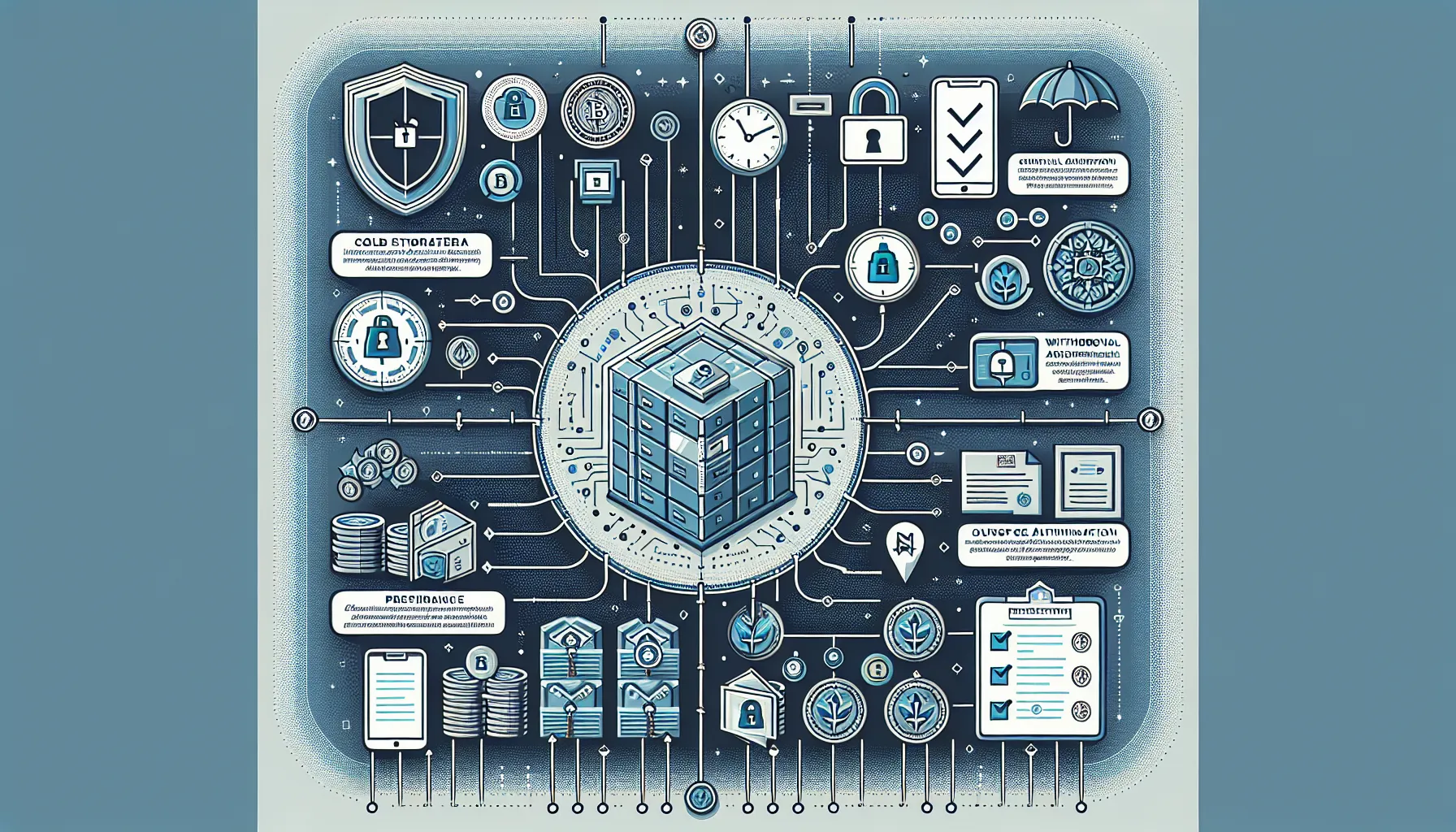Choosing the right crypto exchange can feel like navigating a minefield. With hundreds of platforms vying for attention, each promising low fees, diverse coins, and top-tier security, how does one actually separate the trustworthy from the risky? The stakes are high: pick the wrong exchange, and funds could vanish overnight in a hack or regulatory crackdown. Choose wisely, though, and investors gain access to a secure, efficient gateway into digital assets.
This article cuts through the noise. It walks through the essential criteria for comparing crypto exchanges, from security features and regulatory compliance to fees, user experience, and reputation. Whether someone is a first-time buyer or an experienced trader, understanding these factors helps pinpoint the safest, most suitable platform for their needs. Let’s immerse.
Key Takeaways
- Comparing crypto exchanges requires evaluating security features like cold storage, two-factor authentication, and insurance coverage to protect your funds.
- FCA registration is essential for UK investors, as regulated exchanges must meet strict anti-money laundering and operational transparency standards.
- Trading fees, available cryptocurrencies, and user experience vary significantly across platforms, so match the exchange to your trading style and goals.
- Research an exchange’s track record, including its security history and leadership transparency, to assess reliability before committing funds.
- Test any exchange with small deposits and withdrawals first to verify smooth operations and responsive customer support.
- Never use exchanges as long-term storage—transfer holdings to a hardware wallet to eliminate the risk of platform hacks.
Understanding What Makes a Crypto Exchange Safe

Safety isn’t a single checkbox, it’s a combination of technical safeguards, regulatory oversight, and transparent practices. The most secure exchanges layer multiple protections to shield user funds and data from threats both external (hackers) and internal (mismanagement or fraud). Here’s what separates the safe from the suspect.
Security Features to Look For
Robust security starts with how an exchange stores and protects digital assets. Cold storage, keeping the majority of funds offline, away from internet-connected systems, is non-negotiable. Exchanges that hold most client crypto in cold wallets drastically reduce the risk of large-scale theft. Hot wallets, used for day-to-day withdrawals, should represent only a small fraction of total holdings.
Two-factor authentication (2FA) is another essential. Platforms must enforce 2FA using authenticator apps (like Google Authenticator or Authy) rather than relying solely on SMS codes, which can be intercepted. Look for exchanges that make 2FA mandatory, not optional.
Withdrawal protection features, such as address whitelisting or time-delayed withdrawals, add another line of defence. These measures give users a window to cancel suspicious transactions before funds leave the platform.
Insurance coverage is a strong signal of an exchange’s commitment to security. Some platforms maintain insurance policies that cover losses from cyber breaches or hacks, though coverage terms and limits vary. It’s worth checking whether the policy protects all users or only certain asset types.
Finally, proof of reserves offers transparency. Exchanges that regularly publish cryptographic proofs of their holdings demonstrate they’re not operating fractionally, that is, they actually hold the assets customers believe they own. This practice, while not yet universal, is gaining traction among reputable platforms.
Regulatory Compliance and Licensing
Regulatory approval isn’t just bureaucratic red tape, it’s a vital indicator of legitimacy. For UK investors, FCA registration is a must. The Financial Conduct Authority requires exchanges to meet strict standards around anti-money laundering (AML), know-your-customer (KYC) procedures, and operational transparency. An FCA-registered exchange operates within the law and offers enhanced consumer protections.
Unregistered or offshore exchanges may promise attractive features or lower fees, but they come with significant risk. Without regulatory oversight, there’s little recourse if something goes wrong, whether that’s a hack, liquidity crisis, or outright fraud. Sticking with FCA-approved platforms isn’t foolproof, but it dramatically improves the odds of a safe experience.
Always verify an exchange’s regulatory status before signing up. The FCA’s public register is a reliable resource for confirming whether a platform holds the necessary permissions to operate in the UK.
Key Factors to Compare When Evaluating Exchanges

Once safety boxes are ticked, it’s time to evaluate the practical aspects that affect daily use. Different exchanges cater to different needs, so understanding these factors helps match a platform to an individual’s trading style and goals.
Trading Fees and Cost Structures
Fees can quietly erode profits, especially for active traders. Exchanges typically charge maker and taker fees, makers add liquidity to the order book by placing limit orders, while takers remove liquidity with market orders. Rates vary widely: some platforms offer maker fees as low as 0.1%, while others charge upwards of 0.5% per trade.
Beyond trading fees, watch for deposit and withdrawal costs. Some exchanges waive deposit fees but charge for withdrawals, particularly for fiat currency or certain cryptocurrencies. Network fees (paid to blockchain miners) are usually separate, but a few platforms absorb these costs as part of their service.
Lower fees benefit frequent traders, but there’s a trade-off. Exchanges with rock-bottom fees sometimes skimp on security or customer support. It’s worth paying a bit more for a platform with a solid reputation and robust protections. Transparency matters too: clear, upfront fee schedules signal honesty, whereas hidden or complex cost structures raise red flags.
Available Cryptocurrencies and Trading Pairs
Not all exchanges support the same assets. Some focus on Bitcoin and Ethereum, while others list hundreds of altcoins and niche tokens. Before committing, check whether the platform supports the cryptocurrencies and trading pairs an investor plans to use.
For example, someone looking to trade smaller-cap coins or DeFi tokens will need an exchange with a broad selection. On the other hand, a beginner focused on major cryptos like Bitcoin, Ethereum, or Litecoin can get by with a more limited offering. Also consider whether the exchange supports direct fiat-to-crypto pairs (e.g., GBP to Bitcoin) or requires converting through stablecoins, a step that adds time and potential fees.
User Experience and Platform Accessibility
A secure, low-cost exchange is of little use if the interface is confusing or the mobile app crashes constantly. User experience varies dramatically across platforms. Exchanges like Coinbase are designed with beginners in mind, offering intuitive dashboards and educational resources. Meanwhile, platforms such as Kraken or OKX target advanced traders with complex charting tools, margin trading, and API access.
Consider the learning curve. Beginners benefit from clean layouts, tooltips, and step-by-step guidance. Experienced traders prioritise speed, customisation, and access to advanced order types (stop-loss, limit orders, trailing stops).
Platform accessibility also matters. Does the exchange offer a mobile app? Is the website responsive across devices? For those who trade on the go, a polished mobile experience is essential. Customer support quality, response times, available channels (email, live chat, phone), and helpfulness, shouldn’t be overlooked either.
Assessing an Exchange’s Track Record and Reputation
Past behaviour is often the best predictor of future performance. An exchange’s history, how long it’s been operating, whether it’s faced security incidents, and how it handled those challenges, reveals a lot about its reliability.
Start with the basics: how long has the platform been around? Exchanges with several years of operation tend to be more stable than flashy newcomers. Longevity isn’t a guarantee, but it suggests the platform has weathered market volatility and regulatory changes.
Next, research the exchange’s security history. Has it suffered hacks or breaches? If so, how did management respond? Transparency and accountability matter. An exchange that quickly acknowledged an incident, compensated affected users, and implemented new safeguards demonstrates responsibility. Conversely, platforms that downplayed breaches or blamed users raise serious concerns.
Look into the ownership and leadership as well. Reputable exchanges are transparent about who runs them. Vague or anonymous teams are a warning sign. Check whether the exchange has faced regulatory action, lawsuits, or public controversies. News coverage, community forums (like Reddit or Twitter), and review sites offer valuable insights into how real users perceive the platform.
Finally, consider the exchange’s financial health. Platforms with strong backing, clear revenue models, and proof of reserves are less likely to face liquidity crises. While it’s harder to assess financials for private companies, look for signs of stability: regular updates, active development, and consistent customer service.
Red Flags to Watch Out For
Certain warning signs should prompt immediate caution, or outright avoidance. Recognising red flags early can prevent costly mistakes.
Lack of FCA registration (for UK users) is a major concern. Operating without proper licensing suggests the platform either can’t meet regulatory standards or is deliberately skirting oversight. Either way, it’s a risk not worth taking.
Vague ownership or team information is another glaring issue. If an exchange won’t disclose who’s behind it, where it’s based, or how it’s structured, assume the worst. Legitimate platforms are proud to share their credentials.
Unexplained withdrawal limits or delays can signal liquidity problems. While some restrictions are normal (especially for new accounts undergoing KYC verification), arbitrary or sudden changes to withdrawal policies are troubling. If users report difficulty accessing their funds, take that seriously.
Negative news about hacks, insolvency, or regulatory crackdowns should be investigated thoroughly. Not all negative press is disqualifying, context matters, but a pattern of problems suggests systemic issues.
Other red flags include overly aggressive marketing (“guaranteed returns,” “risk-free trading”), lack of clear contact information, poor or non-existent customer support, and user reviews dominated by complaints about lost funds or frozen accounts. Trust your instincts: if something feels off, it probably is.
How to Test an Exchange Before Committing
Before depositing significant funds, it’s wise to test an exchange with minimal risk. This hands-on approach reveals how the platform performs in practice, beyond marketing promises.
Start by registering with minimal information. Many exchanges allow account creation with just an email address. Explore the interface: Is it intuitive? Are security features easy to enable? Can you navigate to key sections (trading, deposits, withdrawals) without frustration?
If the platform offers a demo account or paper trading, use it. This lets you practise placing orders and familiarise yourself with the tools without risking real money. Not all exchanges provide this, but it’s a valuable feature when available.
Next, make a small deposit, only an amount you can afford to lose. Test the deposit process: Is it straightforward? How long does it take for funds to appear in your account? Once deposited, place a small trade to gauge execution speed and fee transparency.
Crucially, test a withdrawal. This step often reveals hidden issues. Initiate a small withdrawal and observe how the process works. Are there unexpected fees? How long does it take for funds to reach your bank or wallet? Does the platform require additional verification steps? A smooth, timely withdrawal is a strong indicator of operational health.
Finally, contact customer support with a question or concern. Response time and helpfulness provide insight into how the exchange treats users. Platforms with responsive, knowledgeable support are generally more reliable.
If anything during this testing phase feels off, confusing processes, slow withdrawals, unresponsive support, consider it a warning. Better to discover problems with a small test amount than after depositing thousands of pounds.
Making Your Final Decision
With research complete and testing done, it’s time to choose. The safest exchange for any individual depends on their specific needs, but certain principles apply universally.
Prioritise FCA compliance, strong security, competitive fees, and a clean reputation. Leading UK-friendly options like Coinbase, eToro, and Kraken consistently tick these boxes. They offer robust protections, transparent fee structures, and track records of reliability. While no platform is entirely risk-free, these exchanges have earned trust through years of operation and responsible management.
Match the platform to your use case. Beginners benefit from user-friendly interfaces and educational resources, so Coinbase or eToro might be ideal. Active traders who need advanced tools and lower fees may prefer Kraken or similar platforms. Consider how often you’ll trade, which assets you’ll hold, and whether you need features like staking or margin trading.
Once you’ve chosen an exchange, don’t treat it as a long-term storage solution. Only keep funds for active trading on the platform. For long-term holdings, transfer crypto to a hardware wallet, a physical device that stores private keys offline. This “cold storage” approach eliminates the risk of exchange hacks affecting your holdings.
Finally, stay vigilant. The crypto landscape evolves rapidly. Regulatory statuses change, exchanges update security practices, and new platforms emerge. Periodically review your chosen exchange to ensure it still meets your standards. Sign up for alerts or follow official channels to stay informed about important updates.
Security and compliance aren’t static, always verify current status before committing funds, and remain proactive about protecting your assets.
Conclusion
Finding the safest crypto exchange isn’t about picking the flashiest platform or the one with the lowest fees. It’s about balancing security, regulatory compliance, usability, and reputation to match individual needs. By focusing on FCA registration, cold storage, robust 2FA, insurance, and transparent practices, investors can filter out risky platforms. Comparing fees, available assets, and user experience ensures the chosen exchange supports their trading style.
Due diligence doesn’t end at sign-up. Testing an exchange with small transactions, monitoring its track record, and staying alert to red flags are ongoing responsibilities. The crypto market rewards the cautious and punishes the complacent. With the right approach, it’s entirely possible to find a platform that offers both security and convenience, allowing users to participate in digital assets with confidence rather than anxiety.
Frequently Asked Questions
What security features should I look for when comparing crypto exchanges?
Look for cold storage for most funds, mandatory two-factor authentication using authenticator apps, withdrawal protection features like address whitelisting, insurance coverage for cyber breaches, and proof of reserves. These layered protections shield your assets from both external hacks and internal mismanagement.
Why is FCA registration important for UK crypto investors?
FCA registration ensures the exchange meets strict standards for anti-money laundering, know-your-customer procedures, and operational transparency. Registered platforms operate legally and offer enhanced consumer protections, with recourse available if issues arise, unlike unregistered offshore alternatives.
How can I test a crypto exchange before depositing large amounts?
Start by making a small deposit you can afford to lose, place a test trade to check execution speed and fees, then crucially test a withdrawal to ensure funds transfer smoothly. Also contact customer support to assess their responsiveness and helpfulness.
What are maker and taker fees on cryptocurrency exchanges?
Maker fees apply when you add liquidity to the order book by placing limit orders, whilst taker fees occur when you remove liquidity with market orders. Rates typically range from 0.1% to 0.5% per trade, with makers often receiving lower fees as an incentive.
Should I store my cryptocurrency on an exchange long-term?
No, only keep funds for active trading on exchanges. For long-term holdings, transfer cryptocurrency to a hardware wallet that stores private keys offline. This cold storage approach eliminates the risk of losing assets if the exchange suffers a hack or security breach.
What red flags indicate an unsafe cryptocurrency exchange?
Warning signs include lack of proper regulatory registration, vague ownership information, unexplained withdrawal delays or limits, a history of unresolved security breaches, overly aggressive marketing promising guaranteed returns, and predominantly negative user reviews about frozen accounts or lost funds.







